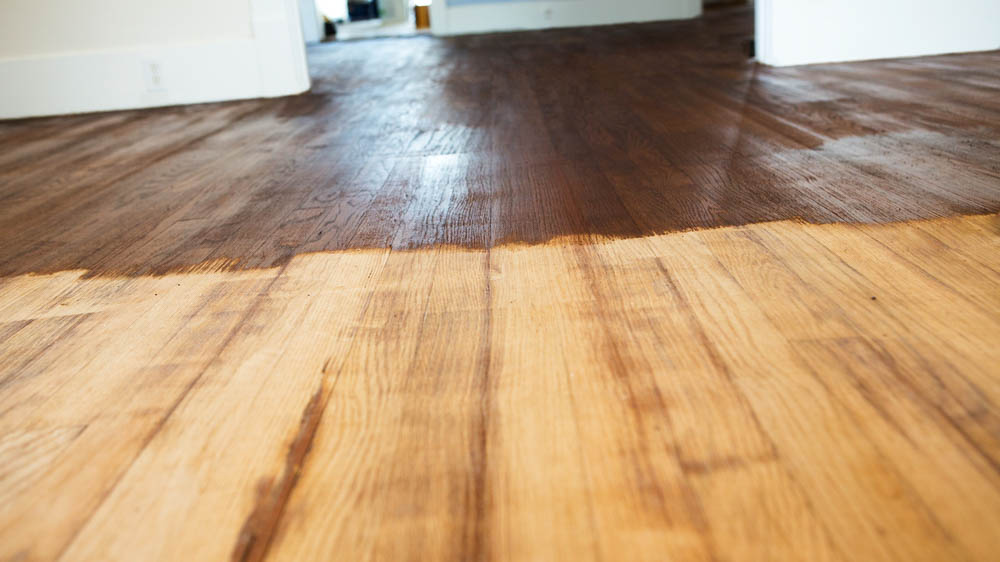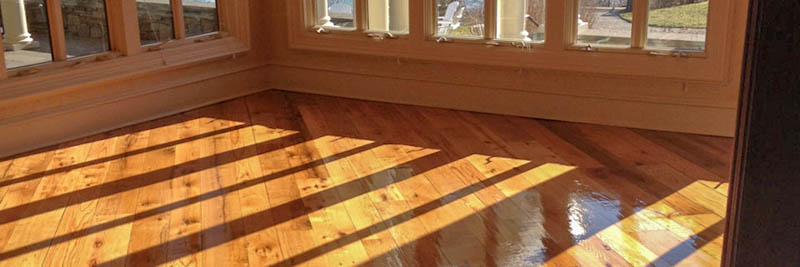Once only used for old rustic cabins, wide wooden planks are now a dramatic way to make a statement in your modern home. Ever since 2012, wide plank wood floors have become more and more popular. Here is a step-by-step walk through of this gorgeous trend that is here to stay.
Trend Report: Wide Is What’s in Vogue
Wider planks used to be relegated to old, rustic cabins. This is because, before the industrial revolution, wood floors were cut and installed individually, by hand; having wider planks cut down on the manpower and time needed to install these wood floors.

But this vintage, natural look has been appearing in more and more homes and commercial spaces in the past decade.
Bigger is Better
Having wider planks can make rooms look bigger, which is why a lot of people like them. They give rooms depth and character, so they help small areas and open floor plans look bigger.
Modern Look
Despite the added bonus of making rooms look bigger, wide planks are mostly preferred now simply for aesthetic purposes. They are much more modern and fresh looking than the traditional, thinner strip planks of wood that you probably have in your house now.
Installing wide planks is a unique way to make your space feel contemporary and new. It’s considered less formal than strip planks, and highlights the rustic, handcrafted qualities that are so in vogue right now.
To make your floor even trendier and more modern, you can up the rustic level by using distressed or reclaimed wood to capitalize on the unique quality of wide plank wood floors.

The Basics:
Dimensions:
It seems that experts can’t really agree on exactly the dimensions of wide plank boards.
Technically, wide planks are considered anything over the standard 5 inches, but in general the trend means board is wider that the typical 2 or 3 inches that can be found in most homes. You can go as wide as 7 or 8 inches, or as small as 3 ¼ inches. It all depends on your taste and your space.
Options:
One of the best things about wide plank wood is the wide array of options (see what we did there?).
Wide planks come in options like:
- Solid hardwood
- Engineered planks
- Even LVT!
With all these options you are sure to find a species, style, and color that you love.
The Good, The Bad, and The Beautiful: Pros and Cons of Wide Planks
Pros:
Big Floors Make A Bigger Space
One of the reasons this trend is so popular is because it makes small spaces look bigger. By increasing the size of the plank, this flooring can give a room more depth. The fewer the planks of wood means fewer seams. This gives the room a more open, modern, calm feel.
Wide is Green
Often, wide plank flooring is made from reclaimed lumber. This recycles wood that was simply going to be thrown away, lessening the impact on the environment.
And reclaimed wood is generally more stable, which means that it will swell and shrink less with the changing humidity and temperature.
“Wide” Array of Options
Wide planks come in every species of wood that you can think of, and can be stained just like any other type of wood. Just like regular size planks, you can find the exact texture, style, and stain of plank you’re looking for.
Cons:
Wide Planks Have Wide Movement
All hardwood is susceptible to movement; as the humidity and temperature changes in a room, the wood shrinks and grows slightly. With wider planks, this movement is more noticeable.
If wood swells too much, then the wide planks can begin to cup or crown (the wood will either become more concave or convex). If the wood shrinks too much, space between the boards can be come noticeable.
To avoid this, you can use reclaimed wood, or choose a more stable wood like Redwood, Fir, or Cedar. You can also control the room’s temperature with Air Conditioning and heating systems to minimize this issue.
If you are looking for a way to refresh your interior design and make your house more modern and spacious-looking, have wider planks is the way to go. They are a simple way to make your house more modern and unique.

